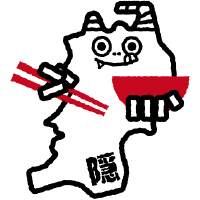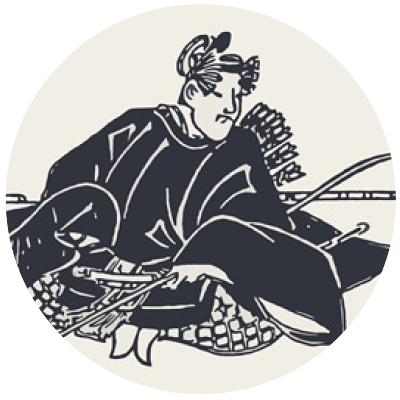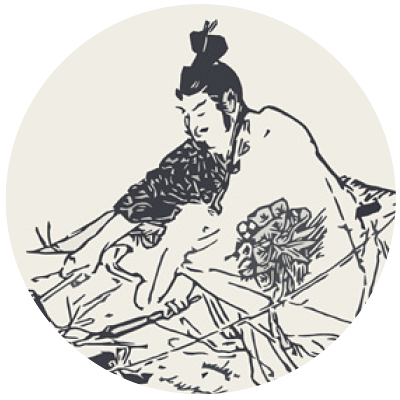This shrine features wisteria trellises that are like tunnels for fairies, as well as peonies that are like women in kimonos. At this shrine, which is famous for providing visitors with luck related to money, you can experience the typical sights of the Japanese spring.

Lovely Flowers
OVERVIEW
Japanese people have worshipped nature and living things since time immemorial, so they have countless gods and spirits; one of these is known as Kanahebi (the “golden serpent”). The people of Miyagi cherish this lizard-like spirit for bringing luck in money and business.
The flower season from late April to May is the best time to visit. Its wisteria trellis, formed from a 300-year-old plant, resembles a tunnel for fairies. The temple also boasts around 1,300 peony plants. In Japan, this flower’s graceful figure is often compared to that of a beautiful woman. This shrine is a perfect spot for photography.
TIPS
The shrine also sells cute fortune-telling strips shaped like snakes; they are also very popular!
DETAIL
ADDRESS Suijin 7, Miiroyoshi, Iwanuma
OPEN
8:00–12:00
13:00–16:00
Open for worship 24 hours a day.
PHONE 0223-22-2672
PARKING 75 spaces
PERIOD
Flower Festival: May 8 (Tuesday) through 21 (Monday)
Annual Festival: May 15 (Tuesday) through 21 (Monday)


Reccommend
Local Tours
Using local guides, we provide many tours that let you discover and experience
the wonders of Japan lying hidden in the “everyday” of the nearby area.

IWANUMA city
As a hub for traffic to the Tohoku region since ancient times, Iwanuma was a post town on the old highway, and it flourished as the town around the Takekoma Inari Shrine and the castle town of the Iwanuma clan. In the Edo period, the Abukuma River, which flows to the south of the city, developed the city as a center for water transport. Today, transport has shifted from the rivers to the skies, and Sendai International Airport fills the river’s role. As it was in the past, the city of Iwanuma continues to be a place where people gather, come, and go.

Key Person

We make pouch curries to delight taste buds the world over!
Nishiki Shokuhin Co., Ltd./Koji Saito
Among the areas that suffered significant damage in the Great East Japan Earthquake, Iwanuma was the first to recover, and it is seen as a role-model municipality for having rebuilt while maintaining its local community. The coastal area features many reconstruction-tourism spots—such as Millennium Hope Hills, a memorial park that will pass on lessons from the disaster to children for the next 1,000 years, and Iwanuma Sheep Village, an open space that makes use of former residential land where you can enjoy contact with sheep. Also, some spots—such as Takekoma Shrine, which is one of Japan’s three great Inari shrines, and Kanahebisui Shrine, which enshrines a golden serpent that is said to bring luck in business and money—are famous for their great spiritual power. We at Nishiki Shokuhin develop and manufacture high-quality pouch curries to delight taste buds the world over. Please come and visit the shop next to our factory!
Specialty Products
Iwanuma faces the Pacific Ocean, and within Miyagi Prefecture, it is an area with a relatively mild climate. These conditions are used to cultivate produce such as rice and melons and flowers such as carnations. Dairy farming is also practiced here. With local specialties such as Iwanuma Tonkatsu and Iwanuma Tonchan and over 30 ramen restaurants, the area is also rich in quality cuisine.
Natural Environment
In Iwanuma—which has a rich natural environment that includes the Pacific Ocean, Abukuma River, and Shiga Highlands—you can enjoy seasonal sights wherever you go. Iwanuma is also full of historic scenery—such as a Giant Ginkgo Tree, which is said to be over 300 years old, and the pine of Takekuma, which appears in Matsuo Basho’s The Narrow Road to the Deep North.
Historical Person
Area Access

From Sendai Station
20min
【TRAIN】 From Sendai Station approx. 20 minutes to Iwanuma Station on the JR Tohoku Honsen Line

From Sendai Airport
20min
【BUS】 From Sendai Airport approx. 20 minutes to Iwanuma Station East Exit on the Rinkujunkan Bus






















